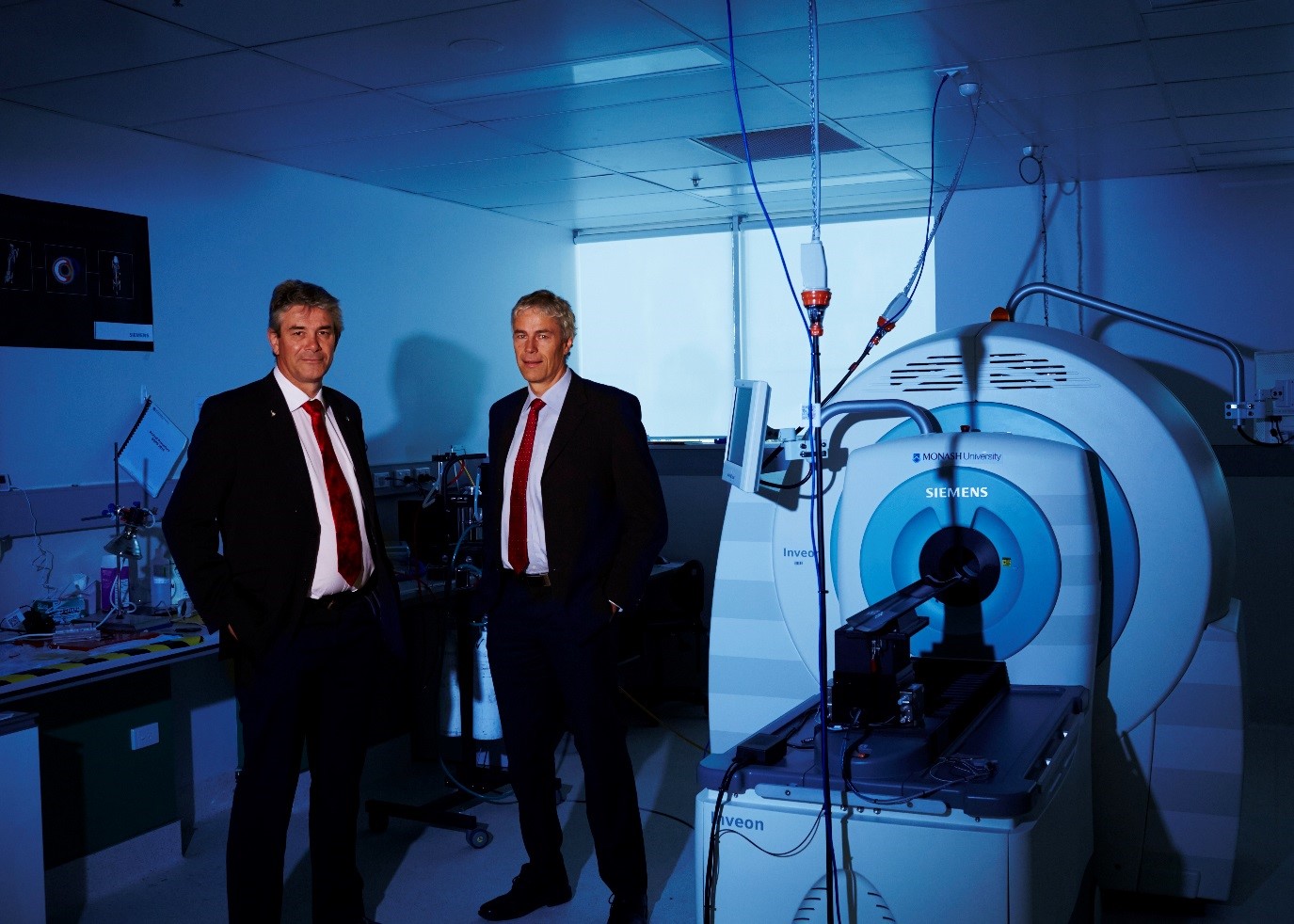
Redrawing the body map
The 3D printing revolution is moving into body parts, with the potential to replace damaged or diseased organs with new tissue created from human stem cells.
Bespoke human body parts “printed” with biological tissue are fast approaching clinical reality. The key technologies – bioprinting, special sterilised laboratories or clean rooms, and advanced imaging – have been brought together, with the results set for use as early as 2016.
This brave new world of biomedicine uses bioprinters, which can produce replacement tissue for damaged organs, new discs for spinal injuries or multi-layered skin for burns victims. New body parts for cancer patients or accident victims are also on the drawing board.
A partnership between Monash University and Australia’s peak scientific organisation, CSIRO, will help operate the new $30 million Biomedical Materials Translational Facility (BMTF), established with funding from Australia’s Science and Industry Endowment Fund.
The facility has a clear pathways-to-market objective. It will host a “technology triumvirate” covering a pipeline of biomedical development from start to finish. Along with the bioprinter, the facility comprises clean rooms that are purpose-built for biomaterial development and state-of-the-art simultaneous PET/MRI imaging equipment to analyse the performance of new tissue and devices in the body, and provide real-time diagnostic imaging.
The BMTF will operate across three sites at the university, CSIRO and the Monash Health Translation Precinct’s new Translational Research Facility. The latter is a joint initiative between Monash, the Monash Medical Centre and the Hudson Institute of Medical Research (formerly MIMR-PHI). Collaboration with biotechnology companies will ensure the technology achieves clinical application locally and globally.
Professor Graham Jenkin, deputy director of the Ritchie Centre at the Hudson Institute of Medical Research, says the technology has the capacity to develop new body tissue, built from stem cells, and biomedical materials. There is also a clear commercial objective.
Professor Jenkin says the three technology platforms complement each other, beginning with development of biological material in the clean rooms, producing and replicating it through the printer using blueprints derived from the imaging technology, and then monitoring its effectiveness and safe performance in the body with the imaging technology. “These facilities will enable us to rapidly translate our discoveries into clinical trials,” he says.
The technology, worldwide, offers extraordinary advances in human medicine, with Professor Jenkin confident that the production of tissue to repair damaged organs or printed body parts is not far off.
He explains that the next generation of 3D printing technology works similarly to an ink-jet printer, but instead of printing different layers of colour, it prints different matrices combined with different types of stem cells to produce types of tissue fitting a particular set of specifications. The specifications required, for example, to customise tissue for an individual patient would be provided through the imaging technology.
“Take, for example, someone who has cancer of the nose,” he says. “You can take an image of a specific segment of tissue, make a blueprint through a 3D computer-aided design drawing, and reproduce it on the bioprinter with the matrix and stem cells. Surgeons would then use this to replace the damaged tissue.”
In its initial application, the PET/MRI imaging equipment will be used largely to analyse the effectiveness of new tissue or devices in the body. The simultaneous capability of the scanner will greatly enhance the progress of scientific trials.
Monash Biomedical Imaging (MBI) director Professor Gary Egan, who will oversee the technology, is planning to use the dual scanner in several projects, including one with Professor John McNeil, head of the Monash School of Public Health and Preventive Medicine, looking at amyloid deposition in the brain and its relationship to the onset of dementia.
Professor Egan says the technology platforms across the entire new biomedical engineering precinct are designed to attract partners – particularly biotech companies – who may wish to tap these resources to advance their own technologies and treatments.
“We have about 20 companies who have indicated serious interest in utilising some or all of the components of this pipeline – for taking a discovery from a basic science concept to an animal model and to an image that shows functional uptake,” he says.
CSIRO Manufacturing Flagship director Professor Keith McLean describes the BMTF as the embodiment of multidisciplinary science – drawing on the expertise of clinicians, engineers, material scientists and biologists working with commercial partners. “It is an essential component of doing modern science,” he says, particularly in the “medtech” area, and particularly if those advances are to make their way to the clinic and into the community “where the potential to make a real impact on improved health outcomes is considerable”.






